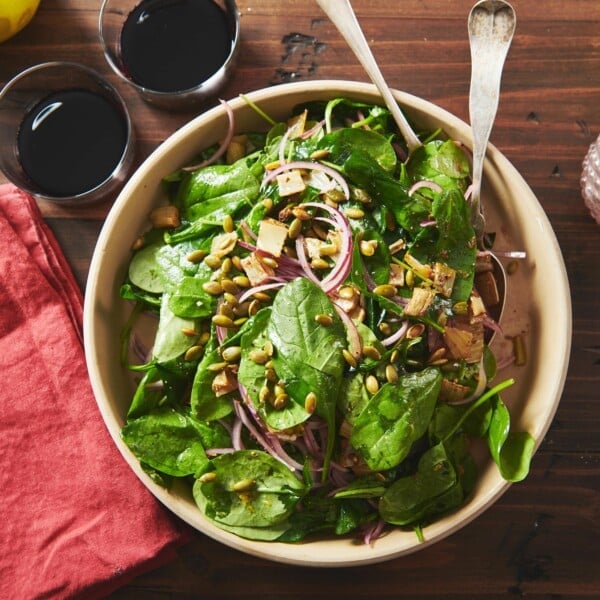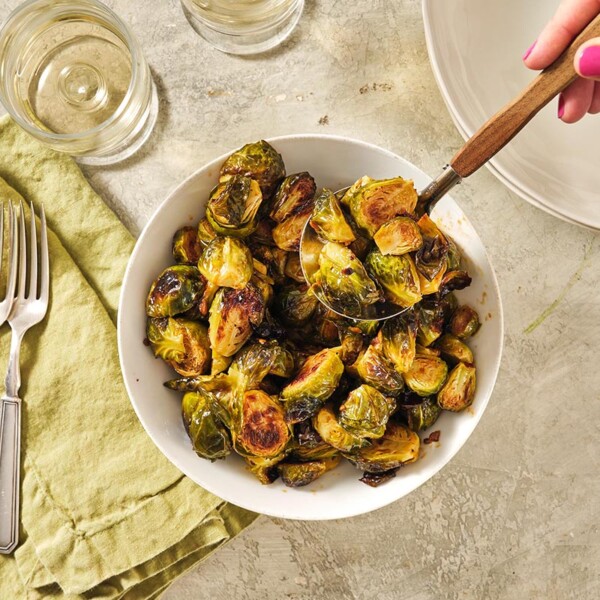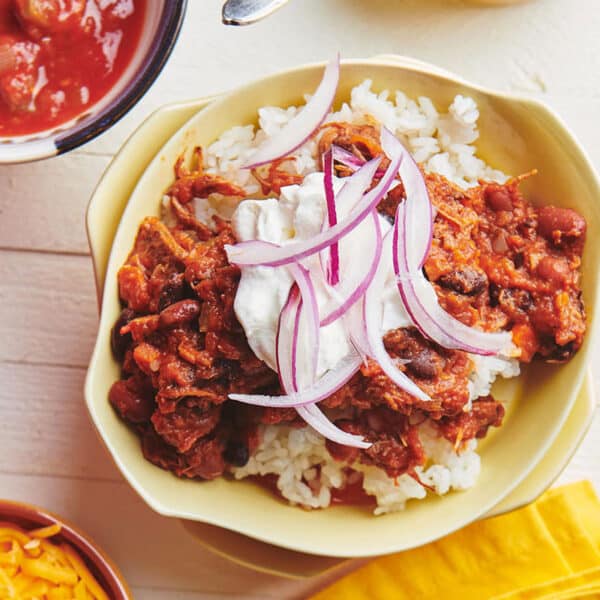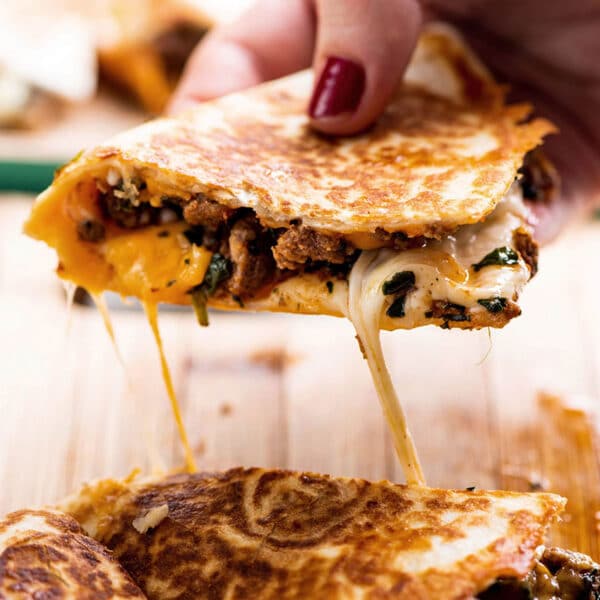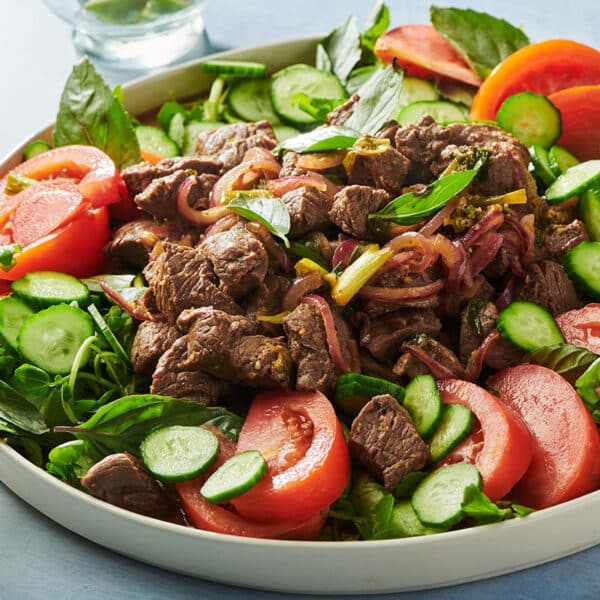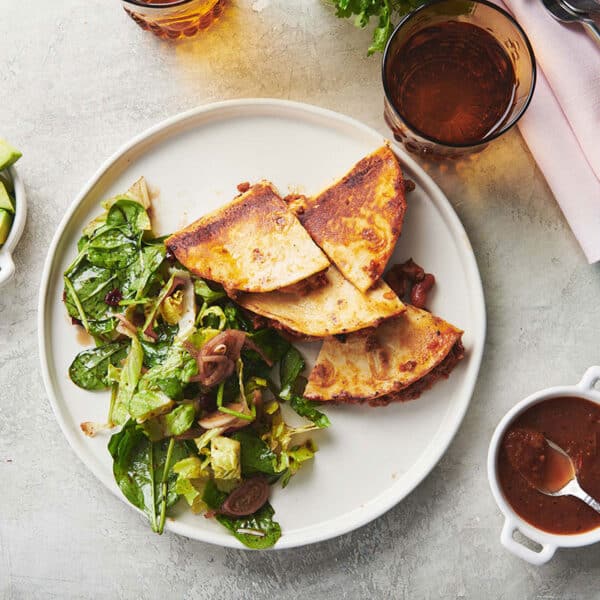Standing Rib Roast
Updated Jan 28, 2025
This post may contain affiliate links. Please read our disclosure policy.
This beef roast is a stunner of a dish and decadent holiday dinner party fare.
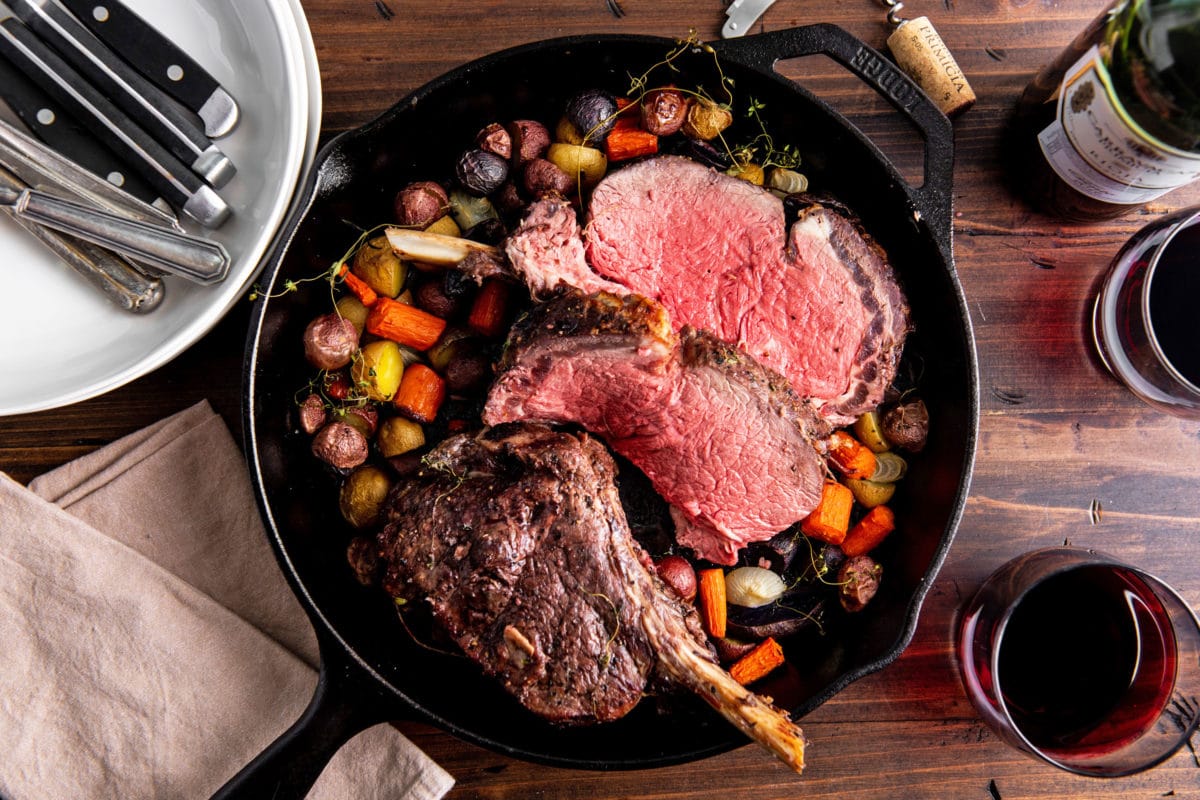
Prime rib, also known as a standing rib roast, is the kind of dish that turns a meal into a celebration. Often, these kinds of roasts are reserved for Thanksgiving, Christmas, and larger special occasion gatherings. But as long as you have a small group, you can make this two-rib roast in your very own home for the holidays. And leftovers are a treat! My kids might wake up before noon to get a second go-round on prime rib.
Since this is a pricy cut of meat, you’ll want to read through the directions carefully before starting. Get yourself a good instant-read thermometer to check for doneness (more on that below), and buy your meat from a very reliable source, like a butcher or a place with high-quality meat and high turnover, like Costco or another store known for good meat. USDA prime is the best grade of meat available in the U.S. It’s more expensive, but it’s a true cut above and has great fat marbling for great texture and flavor. Choice grade is the next level down.
Serve this beef roast with Roasted Duck Fat Potatoes, Roasted Lemon Brussels Sprouts, or Wild Rice and Sweet Potato Salad.
By signing up, you agree to our Privacy Policy.
What's In This Post?

Ingredients
- Rib roast – Allow the roast to come to room temperature for more even cooking. A 2 rib 4-pound roast will feed 4 adults.
- Salt and black pepper – To taste.
- Garlic – Peeled and slivered.
- Carrots – Peeled and cut into 1-inch pieces
- Potatoes – Either baby yellow potatoes or cubed Yukon gold potatoes work.
- Cipollini onions – Offers a mildly sweet flavor. You can use pearl onions instead.
- Olive oil
- Thyme – Offers an herbaceous note, and a few springs of fresh herbs added when serving to enhance the presentation.
- Red wine or beef or chicken broth – Any liquid works and will create a beautiful au jus sauce for the roast.
How to Cook a Prime Rib Roast
- Prepare the rib roast: Trim the rib roast and tie it up with twine if you like. Season generously with salt and black pepper. Poke small holes all over the meat and insert the garlic slivers into the holes.
- Prepare the pan: Place the meat bone side down in a roasting pan (no need for a rack unless you want to use one). Toss the carrots, potatoes, and onions with the olive oil, season with salt and pepper, and surround the roast with them. Tuck the thyme sprigs amidst everything.

- Roast: Cook at 475 F for 15 minutes. Turn the heat down to 350 F and continue to roast for 30 minutes until a meat thermometer stuck into the very center of the roast and not near the bone registers 115 F. Turn the heat back up to 475 F and let it cook for another 10 minutes until it is beautifully browned on the outside.
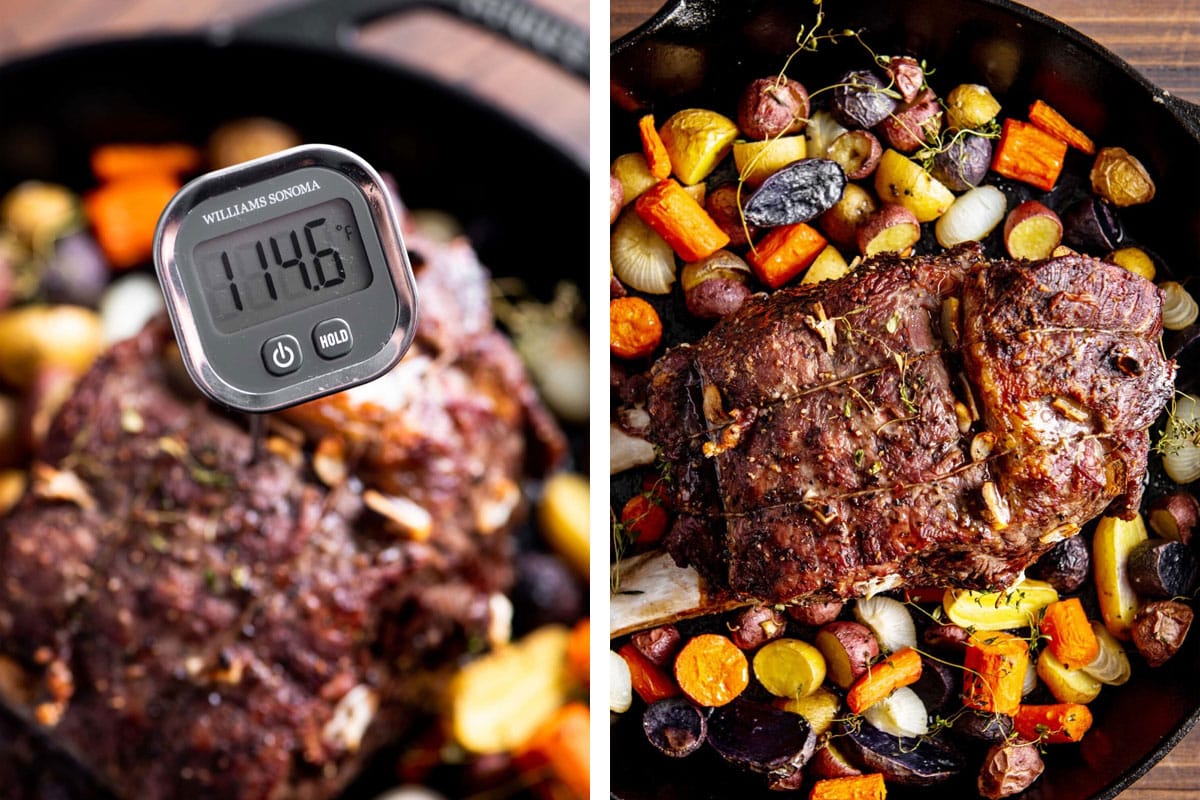
- Finish and serve: Remove the meat from the oven and transfer it to a cutting board; tent the meat with foil to keep it warm. Transfer the vegetables to a serving platter. Pour off all but one or two tablespoons of the fat from the roasting pan and place the roasting pan over a burner on high heat. Add the wine or broth and stir, scraping up any brown bits, until the liquid is reduced by half. Cut the meat, drizzle over the pan juices and enjoy!
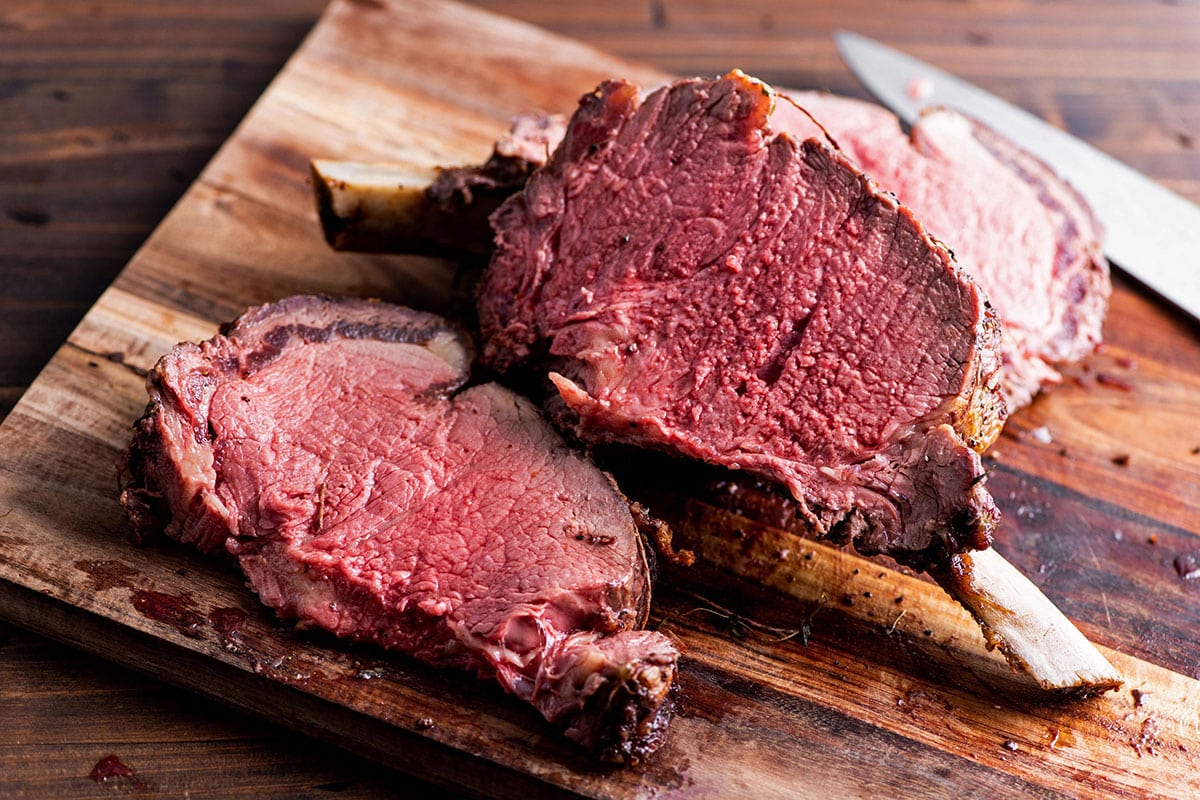
Using a Meat Thermometer for Prime Rib
Standing rib roast, or prime rib, is a very expensive cut of beef, and we don’t want to mess this up. The first thing I would advise is to buy a good meat thermometer. This cut of meat is a little investment, and making sure you get it cooked just the way you like it and no more is well worth the purchase (especially if you cook a lot of meat). Even chefs and very seasoned cooks use instant-read thermometers to make sure their meat is cooked just as they want.
There are a variety of internal thermometers available, from ones you can check remotely to instant-read versions. A good meat thermometer doesn’t have to cost a fortune, either. I love the ThermopenOne (and again, if you think about what a good cut of meat costs, you’re protecting your investment). If you want a more budget-friendly version, the ThermoPop is another choice (and think about a meat thermometer as a present for any meat-loving cook, friend, or family member).
Kitchen Smarts
Make sure the thermometer is inserted into the meat at its thickest point. Also make sure it isn’t touching any rib bones, which can give you a false reading.
Internal Temperatures for Standing Rib Roast
For beef, 125 degrees F is rare, 130 degrees F is medium-rare, and 135 degrees F is medium. Again, for best results, use an internal instant-read probe meat thermometer. You do not want to go above 145 F — prime rib is meant to be eaten fairly rare, and it’s kind of a waste to overcook this cut of meat.
Letting Standing Rib Roast Rest
Letting the meat rest after cooking helps it reabsorb the juices. The amount of resting time depends on the size of the piece of meat.
Remove the meat from the oven and transfer it to a cutting board. Tent the meat with foil to keep it warm. Let it sit for 10 to 15 minutes.
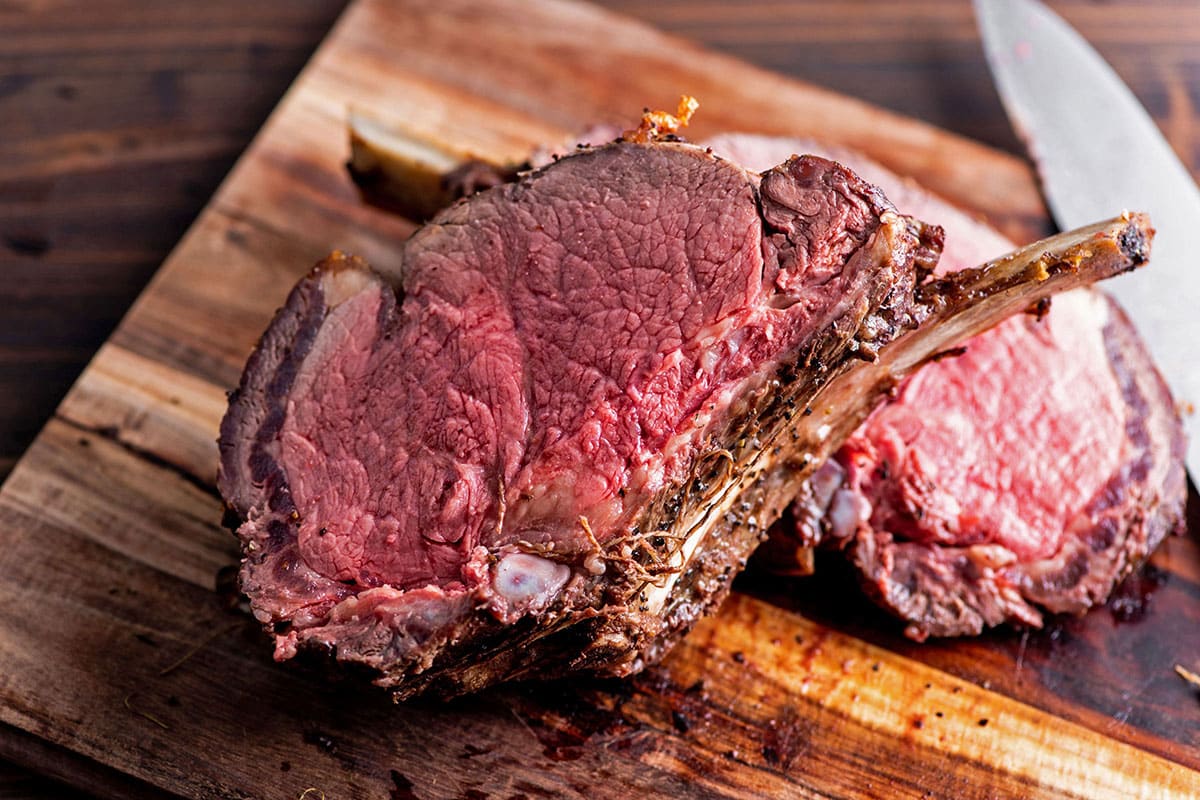
Best Temperature to Cook Prime Rib
There are a few ways you can go. Some people sear the meat first, some cook it slow and steady, and some switch from high to low heat during the roasting process. Also, make sure the oven is fully preheated to the temperature you chose before putting the meat in. After the oven “dings” indicating that it is preheated, give it another 15 minutes to make sure it’s fully preheated to the intended temperature.
I like to “sear” the prime rib roast first in a very hot (475 degrees F) oven to give it a nicely browned crust and then lower the heat to 350 degrees F and cook it low and slow. When it’s almost done, I like to give it a final blast of heat to create a perfect crust while keeping the inside medium-rare.
Storage
Leftovers can be stored in a sealed container in the refrigerator for 4-5 days. Rewarm the meat in a low oven or in the microwave just until warmed through. You don’t want to cook the meat further when reheating.
What to Serve With Rib Roast
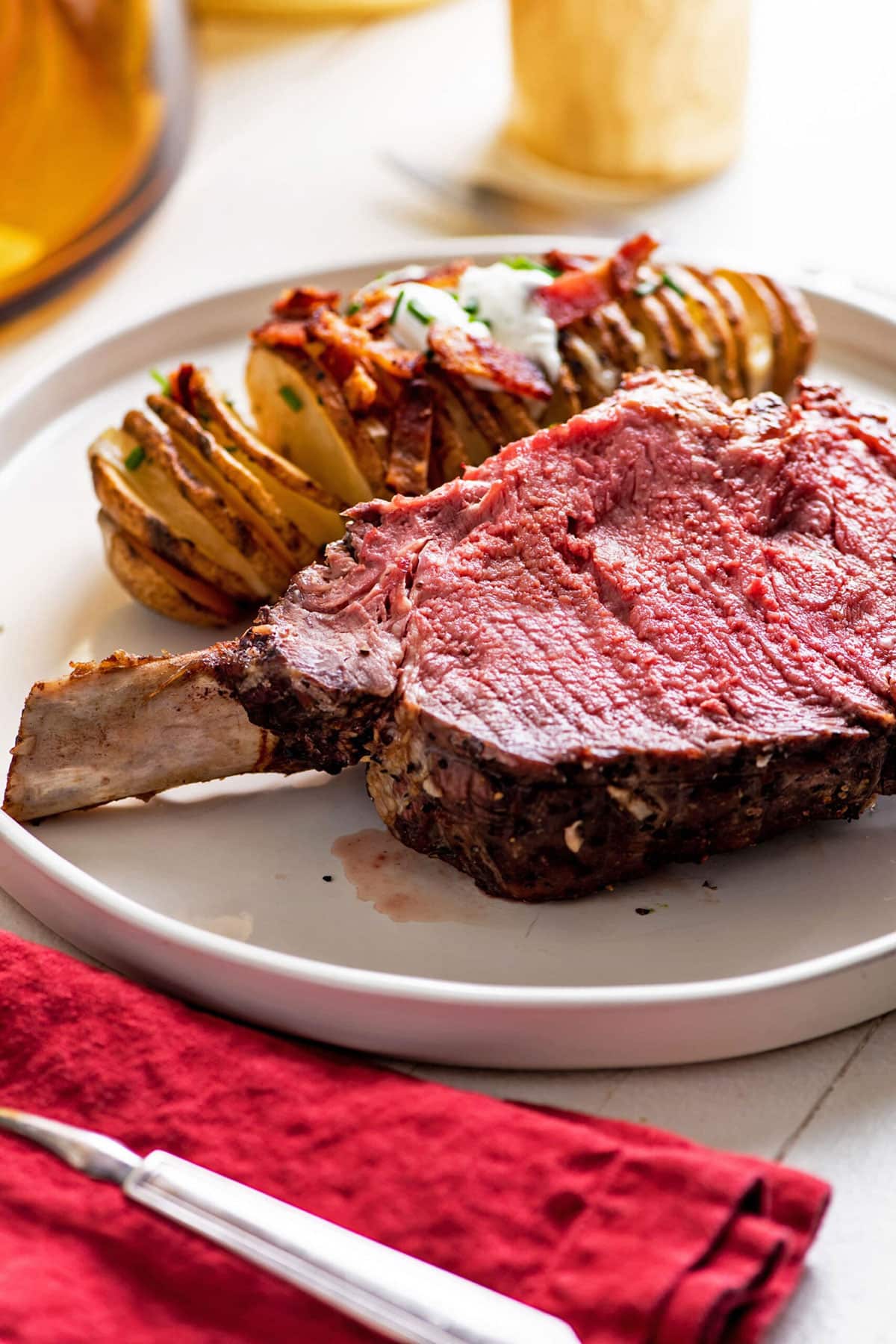
More Red Meat Recipes
- Ribeye Steaks with Thyme-Garlic Butter
- How to Grill Ribeye Steaks
- Grilled Marinated New York Strip Steak
- Grilled Mexican Ribeye Steaks
Pin this now to find it later
Pin It
Standing Rib Roast
Ingredients
- 1 2-rib roast (about 3 to 3 1/2 pounds; trimmed of some of the excess fat; at room temperature)
- Kosher salt and freshly ground black pepper (to taste)
- 2 cloves garlic (peeled and slivered)
- 2 large carrots (peeled and cut into 1-inch pieces)
- 1 pound baby yellow potatoes (halved or Yukon gold potatoes, cut into 1 1/2-inch chunks)
- 4 ounces cipolline or cipollini onions (peeled and halved)
- 2 tablespoons olive oil
- 6 fresh thyme sprigs (approximately)
- 1 cup red wine or beef or chicken broth
Instructions
- Preheat the oven to 475 F.
- Trim the rib roast and tie it up with twine if you like. Season the roast liberally with salt and pepper. Use a small sharp knife to poke small holes all over the meat and insert the garlic slivers into the holes. Place the meat, bone side down, in a roasting pan or large cast iron pan. Toss the carrots, potatoes, and onions with the olive oil, season with salt and pepper, and surround the roast with them. Tuck the thyme sprigs amidst everything.
- Place the roast in the oven and cook for 15 minutes (do not peek at the meat during this time; the high heat needs to be uninterrupted). Turn the heat down to 350 F and continue to roast for 30 minutes until a meat thermometer stuck into the very center of the roast and not near the bone registers 115 F (see Note). Turn the heat back up to 475 F and let it cook for another 10 minutes until it is beautifully browned on the outside. Check the internal temperature again: 125 F is rare, 130 F is medium rare, 135 F is medium-rare. You do not want to go above 145 F — it’s kind of a waste of this cut of meat.
- Remove the meat from the oven and transfer it to a cutting board; tent the meat with foil to keep it warm. Transfer the vegetables to a serving platter or bowl. Pour off all but one or two tablespoons of the fat from the roasting pan and place the roasting pan over a burner on high heat. Add the wine or broth and stir, scraping up any brown bits, until the liquid is reduced by half, about 7 minutes. Transfer it to a pitcher or bowl with a spoon to pass at the table.
- When the roast has sat for 10 minutes to reabsorb the juices, slice it and moisten the meat a bit with some of the pan sauce before serving, then pass the rest of the sauce.
